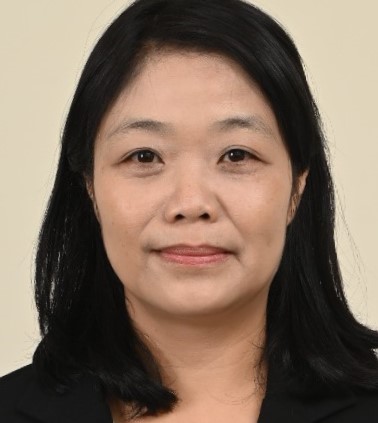Biomaterials
(C-94) Promotion of osteobconduction on bone tissue engineering scaffolds by plasma polymerization surface functionalization
Thursday, October 12, 2023
9:30 AM - 10:30 AM PDT
Location: Exhibit Hall - Row C - Poster # 94

Meng Wang, PhD
Professor
National Taiwan University of Science and Technology, United States
Presenting Author(s)
Introduction:: Metal alloys are commonly applied to prepare artificial bone replacements and joint substitutes where the problems such as poor interactions with tissue and risk in corrosion remained. The corrosion of implantable grafts are generally resulted from the interactions with chloride ions and the dissolved oxygen that the outcomes associated with poor mechanical properties and release of toxic metallic compounds. It is therefore compulsory to develop corrosion resisting artificial substitutes with good osteoinduction properties for clinical applications. This study proposes to apply plasma polymerization to prepare thin films to surface functionalize metallic substrats because plasma-enhanced chemical vapor deposition (PECVD) allows preparing uniform and dense thin coatings through dry processes with rapid preparation time and at a relatively low temperature. The organic/inorganic hybrid composition of the thin films are modulated by the parameters and used precursors for PECVD.
Materials and Methods:: The surface of metal substrate was firstly alternatively coated with calcium phosphate (Ca-P), followed by measuring the thickness and density of the plasma polymerized thin films by field-emission scanning electron microscope (FE-SEM), water contact angle (WCA), attenuated total reflection Fourier transform infrared spectroscopy (ATR-FTIR), and electron spectroscopy for chemical analysis (ESCA). The density of thin films was characterized by quartz crystal microbalance (QCM). The corrosion experiments were conducted in Hank's solution to mimic the real condition and was evaluated by potentiodynamic polarization.
Results, Conclusions, and Discussions:: The corrosion resistance of the PECVD prepared thin films depends on the thickness and density of the PECVD parameters. The biocompatibility and osteoinduction of the plasma polymer protected metal substrates were evaluated by directly cultivating human osteoblast cells (hFOB1.19) to evaluate the potential for bone tissue engineering and biomedical applications.
Acknowledgements (Optional): : The author would like to express great appreciation to the Minister of Science and Technology, Taiwan (MOST: 111‐2221‐E‐011‐008‐MY3).
References (Optional): :
Materials and Methods:: The surface of metal substrate was firstly alternatively coated with calcium phosphate (Ca-P), followed by measuring the thickness and density of the plasma polymerized thin films by field-emission scanning electron microscope (FE-SEM), water contact angle (WCA), attenuated total reflection Fourier transform infrared spectroscopy (ATR-FTIR), and electron spectroscopy for chemical analysis (ESCA). The density of thin films was characterized by quartz crystal microbalance (QCM). The corrosion experiments were conducted in Hank's solution to mimic the real condition and was evaluated by potentiodynamic polarization.
Results, Conclusions, and Discussions:: The corrosion resistance of the PECVD prepared thin films depends on the thickness and density of the PECVD parameters. The biocompatibility and osteoinduction of the plasma polymer protected metal substrates were evaluated by directly cultivating human osteoblast cells (hFOB1.19) to evaluate the potential for bone tissue engineering and biomedical applications.
Acknowledgements (Optional): : The author would like to express great appreciation to the Minister of Science and Technology, Taiwan (MOST: 111‐2221‐E‐011‐008‐MY3).
References (Optional): :
